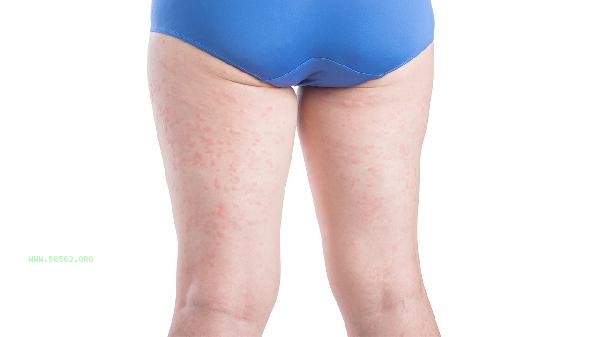The fat at the base of the thighs can be reduced through dietary adjustments, targeted exercise, and lifestyle improvements. The main methods include controlling calorie intake, strengthening lower limb strength training, increasing aerobic exercise frequency, avoiding prolonged sitting, and maintaining sufficient sleep.

1. Control calorie intake
Reduce the proportion of refined carbohydrates and high-fat foods, replace white rice with whole grains, and choose low-fat proteins such as chicken breast. The recommended daily vegetable intake is 500 grams, with priority given to cruciferous vegetables such as broccoli that are rich in dietary fiber. The main cooking method is steaming and boiling, avoiding fried foods. Keeping a diet diary can help monitor calorie gaps.
2. Lower limb strength training
Deep squats and lunges can effectively stimulate the inner thigh muscles, with 3-4 sets of 15 repetitions per group. The lateral leg lifting and clamshell opening and closing movements are specifically designed for the fat at the base of the thighs, and can use elastic bands to increase resistance. supplementing with whey protein after strength training can help with muscle repair, but total calories need to be controlled.
3. Aerobic exercise combined with
4-5 times a week of swimming or elliptical machine training for more than 30 minutes can reduce joint pressure. Intermittent brisk walking is more suitable for people with a larger base, adopting a cyclic pattern of brisk walking for 3 minutes and slow walking for 1 minute. Stretch the inner thigh after exercise to prevent muscle clumping.

4. Improve sedentary habits
Get up and move for 5 minutes every hour, doing wall squats or heel exercises. Small foot pedals can be used to maintain lower limb movement during work, and hard seats can be chosen to avoid fat accumulation in the buttocks. Take a 20 minute walk after work to promote blood circulation and help metabolize water retention in the lower limbs.
5. Sleep Quality Optimization
Ensure 7 hours of deep sleep per day and avoid blue light stimulation 2 hours before bedtime. Lack of sleep can lead to an increase in cortisol, causing fat to accumulate in areas such as the thighs. Gravity blankets can be used to improve sleep quality, and it is advisable to maintain a bedroom temperature of 20-22 degrees Celsius.

Weight loss needs to last for more than 3 months to show significant results, and it is recommended to measure changes in thigh circumference every month instead of daily weighing. Warm up and relax before and after exercise, and adjust the training intensity if joint pain occurs. Dietary changes need to be gradual, sudden extreme dieting may lead to metabolic decline. Edema that occurs before the female menstrual cycle is a normal phenomenon and can be relieved by supplementing potassium ions and applying hot compress. If accompanied by orange peel like changes in the skin, it can be combined with essential oil massage to promote lymphatic circulation.






Comments (0)
Leave a Comment
No comments yet
Be the first to share your thoughts!